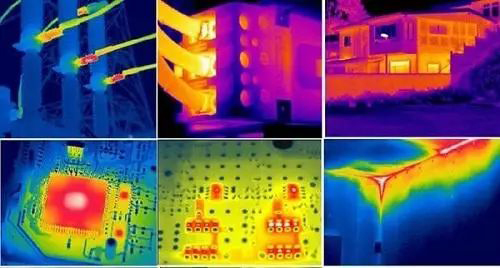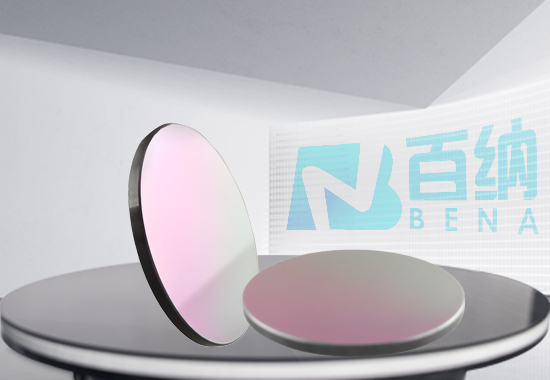The operating wavelength range of typical thermal imaging thermometers is in the mid to long-wave infrared, 2-14 µm (2000-14000 nm) or 7-14 µm (7000-14000 nm). The specific operating wavelength range can vary between different manufacturers’ products. Ordinary optical lenses, however, are completely cut off and become opaque beyond 3000 nm.

This type of glass, when used in thermal imaging devices, will not exhibit temperature changes and therefore will not be effective for thermal imaging temperature measurement. In this case, it is necessary to use a filter that can transmit mid to long-wave infrared wavelengths. Commonly used materials for this purpose are single-crystal silicon and single-crystal germanium.
![]()
In some thermal imaging devices, we can also use silicone lenses crystals to replace germanium glass. The operating wavelength range of silicon crystals is not as extensive as that of germanium glass. Single-crystal silicon (Si) is a chemically inert material with high hardness and is insoluble in water. It has excellent light transmission properties in the 1-7 µm wavelength range.

Germanium glass window has excellent light transmission properties in the 2-16 µm wavelength range and is chemically stable, making it resistant to reactions with metal oxides, acidic substances, air, and water. Infrared thermometers and thermal imaging devices require filters that can transmit mid to long-wave infrared wavelengths. These devices typically operate in the 2-13 µm range, and germanium glass is well-suited for this purpose due to its excellent transmission in the mid to long-wave infrared. Ordinary optical glass has very low transmittance in these wavelengths, making it unsuitable for such applications. Additionally, by coating germanium glass with optical thin films, its transmittance can be significantly increased, and its surface reflectance can be reduced. Germanium glass is opaque in the visible light wavelength range.
Additionally, germanium optical windows have excellent light transmission properties in the far-infrared wavelength range of 300-3000 µm, a characteristic not shared by other infrared materials. Single-crystal silicon (Si) is typically used for mid-wave infrared optical windows and optical filter substrates in the 3-5 µm range. Due to its good thermal conductivity and low density, silicon is also a commonly used material for manufacturing laser mirrors, infrared thermometers, and infrared optical lenses.
Typically, germanium glass is used for the windows of infrared thermal imaging devices and infrared thermometers, primarily considering the 8-14 µm wavelength range. Without coating, the transmittance of germanium glass is only 40-50%. However, after applying an anti-reflective coating, the transmittance can reach up to 90%, thereby improving the product’s detection sensitivity and temperature measurement range. Additionally, many customers require the germanium glass to be coated with a diamond-like carbon (DLC) film to enhance its hardness and provide some degree of explosion protection.